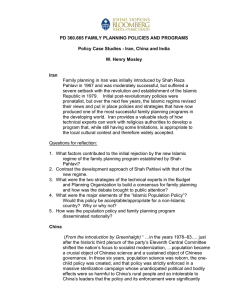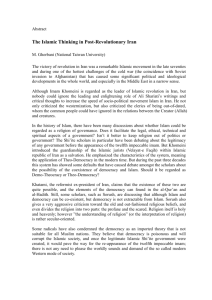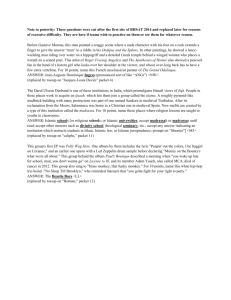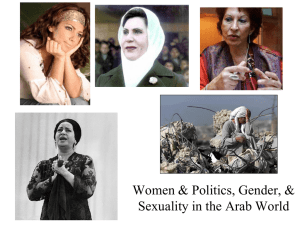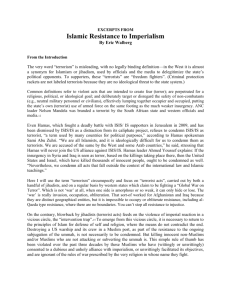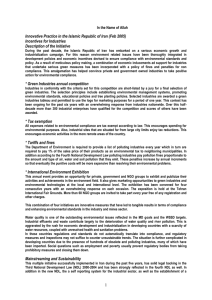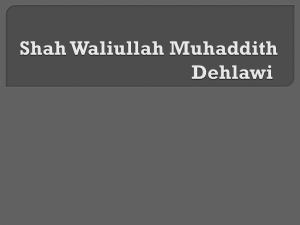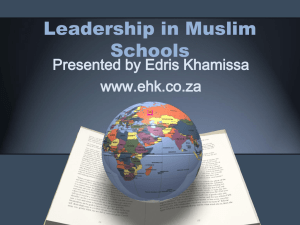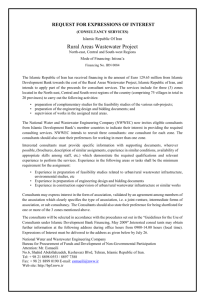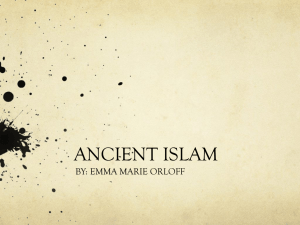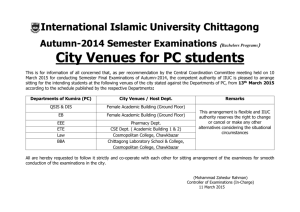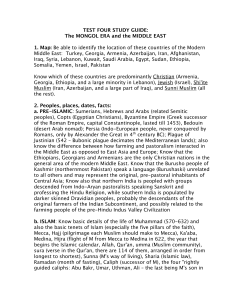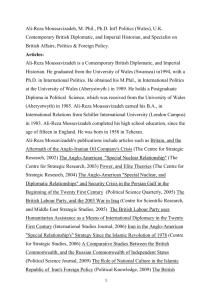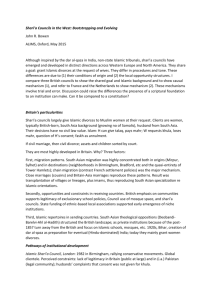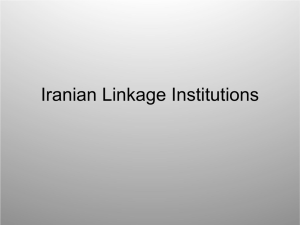Fall 2013 (Word document)
advertisement
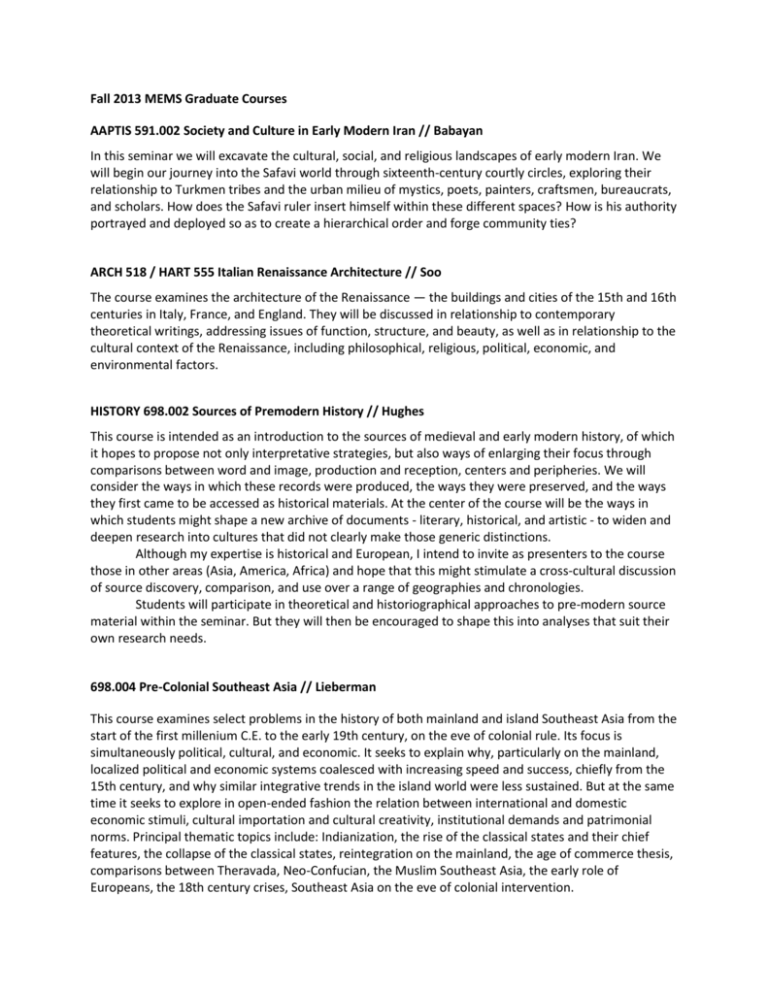
Fall 2013 MEMS Graduate Courses AAPTIS 591.002 Society and Culture in Early Modern Iran // Babayan In this seminar we will excavate the cultural, social, and religious landscapes of early modern Iran. We will begin our journey into the Safavi world through sixteenth-century courtly circles, exploring their relationship to Turkmen tribes and the urban milieu of mystics, poets, painters, craftsmen, bureaucrats, and scholars. How does the Safavi ruler insert himself within these different spaces? How is his authority portrayed and deployed so as to create a hierarchical order and forge community ties? ARCH 518 / HART 555 Italian Renaissance Architecture // Soo The course examines the architecture of the Renaissance — the buildings and cities of the 15th and 16th centuries in Italy, France, and England. They will be discussed in relationship to contemporary theoretical writings, addressing issues of function, structure, and beauty, as well as in relationship to the cultural context of the Renaissance, including philosophical, religious, political, economic, and environmental factors. HISTORY 698.002 Sources of Premodern History // Hughes This course is intended as an introduction to the sources of medieval and early modern history, of which it hopes to propose not only interpretative strategies, but also ways of enlarging their focus through comparisons between word and image, production and reception, centers and peripheries. We will consider the ways in which these records were produced, the ways they were preserved, and the ways they first came to be accessed as historical materials. At the center of the course will be the ways in which students might shape a new archive of documents - literary, historical, and artistic - to widen and deepen research into cultures that did not clearly make those generic distinctions. Although my expertise is historical and European, I intend to invite as presenters to the course those in other areas (Asia, America, Africa) and hope that this might stimulate a cross-cultural discussion of source discovery, comparison, and use over a range of geographies and chronologies. Students will participate in theoretical and historiographical approaches to pre-modern source material within the seminar. But they will then be encouraged to shape this into analyses that suit their own research needs. 698.004 Pre-Colonial Southeast Asia // Lieberman This course examines select problems in the history of both mainland and island Southeast Asia from the start of the first millenium C.E. to the early 19th century, on the eve of colonial rule. Its focus is simultaneously political, cultural, and economic. It seeks to explain why, particularly on the mainland, localized political and economic systems coalesced with increasing speed and success, chiefly from the 15th century, and why similar integrative trends in the island world were less sustained. But at the same time it seeks to explore in open-ended fashion the relation between international and domestic economic stimuli, cultural importation and cultural creativity, institutional demands and patrimonial norms. Principal thematic topics include: Indianization, the rise of the classical states and their chief features, the collapse of the classical states, reintegration on the mainland, the age of commerce thesis, comparisons between Theravada, Neo-Confucian, the Muslim Southeast Asia, the early role of Europeans, the 18th century crises, Southeast Asia on the eve of colonial intervention. 826 Historical Sources in Japanese // Tonomura This course will introduce the pleasure and pain of reading primary sources in the field of premodern Japanese history to students with sufficient linguistic facility. A strong Japanese language background is a prerequisite for taking this course. We will familiarize ourselves with a variety of historical materials, read and interpret them, and consider relative merits and problems presented by each type of material. We will first read translated documents alongside the Japanese originals, and in conjunction with relevant secondary works. In addition to weekly exercise, each student will choose an English language book and examine the ways in which its author used historical sources by checking them in the library. MUSICOL 642 Late Renaissance Music: Motet &the Counter-Reformation // Mengozzi NES 567 Classic Islamic Texts: Islamic Theology, Philosophy & Mysticism // Knysh This course is structured around the reading and analysis of Islamic texts (written in Arabic) from the classical and post-classical epoch (ninth century CE to the present) arranged chronologically. This academic term our topic will be Islamic theology or kalam, Islamic philosophy or falsafa, and Islamic mysticism or tasawwuf. The readings will be adjusted based on the interests of the students enrolled in the course. We shall be reading the texts and discussing their authors, paying special attention to the religio-political circumstances in which these texts were written and their place in the history of Islamic thought. Special attention will be given to the analysis of the technical terminology employed by the Muslim writers whose work will be the subject of the course. After four or five weeks of guided reading and discussion, each student will be asked to choose any Arabic text related to the topics discussed in the course, to distribute it among the members of the group, and to lead a reading session based on it. 591.002 Society & Culture in Early Modern Iran // Babayan This seminar explores the features of the ‘early modern’ in the Persianate world. Early modernity in Europe has been associated with a new centering of society, with the emergence of a private sphere, with the spread of literacy and the disciplining of the body. This ‘civilizing process,’ according to Norbert Elias, is made implicit through the production and dissemination of pedagogical manuals on proper etiquette, conduct and manners that intended to regulate social behavior and emotional expression. Are these salient features of societies that emerge in early modern Iran and northern India? To probe the contours of the ‘early modern’ in Persianate landscapes we will study shared millenarian discourses in the sixteenth century that gave birth to colorful imaginations of cosmic change. What forms of knowledge were deployed to articulate millenarian visions in the Persianate world? What media were mobilized to communicate these visions? How was the sacred imagined and performed? An investigation into the shared discursive realms of the ‘sacred’ will allow us entry into complex social processes that shaped worldviews, fashioned concepts of time and space, produced categories of thought, defined the licit and the illicit, created and controlled desires, and reproduced social and economic structures of Timurid, Safavid, and Mughal empires. RUSSIAN 552 Russian Literature of the 18th Century // Khagy This course offers a survey of eighteenth-century literature from the Baroque to Sentimentalism and (pre)Romanticism in its broad historical, social, and cultural context. Period literature will be considered in relation to comparable European developments. The course will include a discussion of common narratives of eighteenth-century culture such as secularization, westernization, Enlightenment, and the emancipation of literature. Special focus on the development of Russian poetry/poetics and the evolving philosophy of verbal art.


